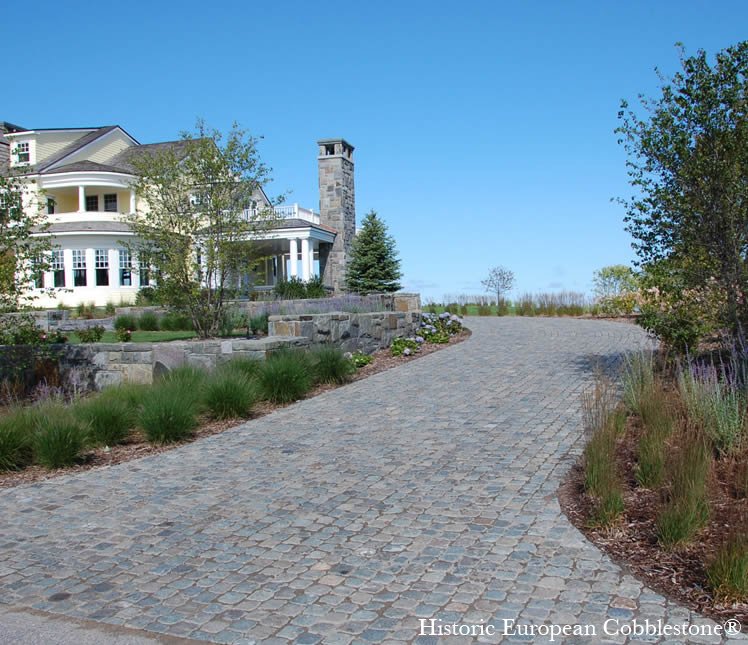The first known use of word driveway was in 1871.
According to “This Old House”, most houses built before 1850 were reached via dirt paths. Driveways for the common home simply did not exist. The dirt paths were direct rather than meandering, and not very wide, perhaps 3′ at most. They were not even meant for carriages – and certainly not meant for vehicles which would appear in later years.
In later years, the driveway was originally designed to be a path that you drove on (originally for carriages) to reach the front of a home. Only in modern times, when everyone owned a car, did there become a need for a place to store it (garage), so the driveway became a place to “park your car.” With the age of motorized vehicles, post 1900, actual driveways and back alley access ways became commonplace.
During the second half of the 19th century, creative driveways began to show up on nicer homes. Semi-circular drives and curving walks, along with the addition of curbing—trimmed edges of cobblestone, cut stone, brick, shells, or clay tile began to make an appearance. Gravel was the preferred surfacing material, although brick, stone and flagstone walks became more prominent and sometimes only a two wheel concrete ribbon down a grass or dirt path.
Today’s driveways and choices of paving materials are plentiful, ranging from concrete, asphalt, gravel, and decomposed granite, to more creative and long lasting materials such as brick, natural stone pavers, and our favorite; cobblestone! Today’s driveways can take on the original historical appearance with reclaimed Historic European Cobblestone – a piece of history beneath your vehicle and feet! The driveway has come a very long way and now… actually full circle!

